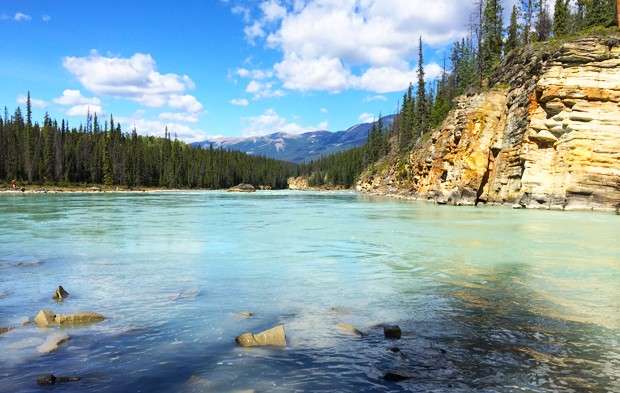How to stop human-made droughts and floods before they start

Alberta's rivers are the main source of water for agriculture in Canada's Prairie provinces. But climate change and increased human interference mean that the flow of these headwaters is under threat. This could have major implications for Canadian gross domestic product, and even global food security.
A new study published in Hydrological Processes sheds light on sources of streamflow variability and change in Alberta's headwaters that can affect irrigated agriculture in the Prairies. This provides the knowledge base to develop improved water resource management to effectively adapt to evolving river flow conditions.
"This study is a call for better understanding of the complex interactions between natural and human-made change in river systems" says the study's lead author, Ali Nazemi, assistant professor in Concordia's Department of Building, Civil and Environmental Engineering.
"We hope this can result in better human management to promote water, food and energy security both in Canada and around the world."
Nazemi and his co-authors developed a mathematical process to examine streamflow and climate data and carry out a case study on eight streams within the Oldman River Basin in Southern Alberta. They discovered various forms of change in the annual average streamflow and timing of the yearly peak in Alberta's headwater streams throughout the 20th century.
"We saw that change in streamflow can be mainly linked to temperature variance, as well as to human regulations through water resource management," says Nazemi.
"From the natural perspective, we found that air temperature is the main driver of change in Alberta's headwaters due to its effect on snowmelt in the Rocky Mountains, where the headwaters are initiated. But various components of temperature affect the streamflow differently - this shows the complexity of streamflow response to climate variability and change."
They found that Pacific Decadal Oscillation—a climate variability signal similar to El Niño that's linked to the sea surface temperature in the Pacific Ocean—is the main driver of change in average annual flow.
In contrast, other triggers of regional air temperature—such as climate change—are the key sources behind major variations in the timing of the annual peak in Alberta's headwaters.
"In addition to these natural sources, human-made factors such as reservoir regulation can profoundly change the streamflow characteristics," Nazemi explains. "Although the general tendency of human regulation is to reduce the severity of above? and below?average streamflow conditions, it can also increase the severity of both, if the system is not well managed."
Indeed, the Canadian Prairies have been, and will continue to be the subject of major variability and change, as seen in extreme conditions such as the Dust Bowl of the 1930s and the devastating flood of 2013 in southern Alberta..
Nazemi hopes that this study will lead to the development of effective regional water resource management in the Prairies and beyond.
"The major river systems around the world are now highly regulated by human activity—and the natural streamflow regime is perturbed by climate change. This study can provide a scientific methodology to understand the effects of different natural and anthropogenic drivers on river flows. This is the first step towards development of effective management strategies that can face the ever-increasing threats to our precious freshwater resources in Canada and globally."
More information: Ali Nazemi et al. Forms and drivers of annual streamflow variability in the headwaters of Canadian Prairies during the 20century, Hydrological Processes (2016). DOI: 10.1002/hyp.11036
Provided by Concordia University

















